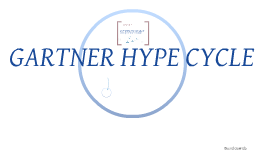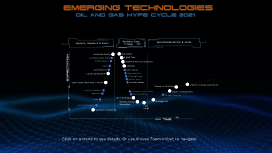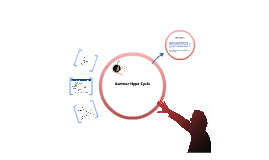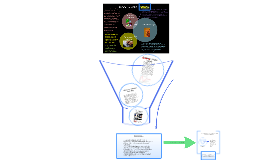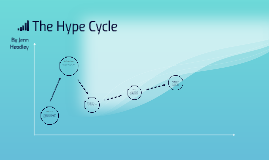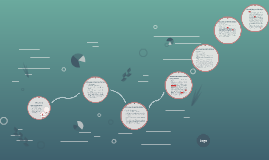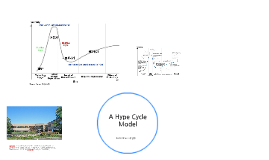Hype Cycle forVvirtualization
Transcript: GARTNER HYPE CYCLE Cada año, Gartner publica el reporte “Hype Cycle” que evalúa más de 1.900 tecnologías en su estado de madurez, los beneficios empresariales que tiene y su evolución futura. Un hype cycle (hiper ciclo) es una representación gráfica de la madurez, la adopción y la aplicación social de una tecnología específica. Gartner, con este término, caracteriza la introducción de nuevas tecnologías, que se caracterizan por un exceso de entusiasmo o “hype” al comienzo y una caída o decepción posterior cuando ya no son novedad. Los ciclos Hype muestran también cómo y cuándo las tecnologías se mueven más allá del entusiasmo, logran ofrecen beneficios prácticos y se vuelven ampliamente aceptadas por la gente. De acuerdo a Gartner, los ciclos Hype tienen el propósito de separar el entusiasmo de la dura realidad y permiten al CEO (Chief Ejecutive Officer) decidir si una determinada tecnología está lista para su adopción. Interpretación del Ciclo según Gartner Technology Trigger Peak Of Inflated Expectations Trough of Disillusionment Slope of Enlightenment Plateau of Productivity Campos de aplicación Advertising Analytic Applications Application Architecture Application Development Application Infrastructure Application Security Application Services and Outsourcing Automotive Electronics Automotive Demand and Supply Chain Technologies Back to Top Banking and Investment Services Core Applications Technologies Banking and Investment Services Customer Acquisition and Retention Broadcasting and Entertainment Business Continuity Management Business Intelligence Business Process Management Business Process Services & Outsourcing Business Use of Social Technologies Back to Top Cloud Application Infrastructure Services (PaaS) Cloud Computing Cloud Security Communications Service Provider Infrastructure Communications Service Provider Operations Consumer Devices Consumer Goods Consumer Services and Mobile Applications Consumer Technologies Contact Center Infrastructure Content Management Context-Aware Computing CRM Customer Service and Support CRM Marketing Applications CRM Sales Back to Top Data and Collaboration Security Data Center Power and Cooling Technologies Data Management Disaster Recovery Management Back to Top E-Commerce Education Emerging Energy Technologies Emerging Technologies Enterprise Communication Applications Enterprise Architecture Enterprise Information Management Enterprise Resource Planning (ERP) Back to Top Financial Services Payment Systems Back to Top Global Consumer Communications Services Governance, Risk and Compliance Technologies Government Transformation Green IT and Sustainability in India Back to Top Healthcare Payers Healthcare Provider Applications and Systems Healthcare Provider Technologies and Standards High-Performance Workplace Human Capital Management Software Human-Computer Interaction Back to Top ICT in China ICT in India Identity and Access Management Technologies Imaging and Print Services Infrastructure Protection Infrastructure Services and Outsourcing IT Operations Management Back to Top Legal and Regulatory Information Governance Life Insurance Life Sciences Back to Top Manufacturing Product Life Cycle and Operations Management Master Data Management Media Industry Publishing Mobile Device Technologies Back to Top Natural Resources and Process Manufacturing Networking and Communications Back to Top Open-Source Software Outsourcing in Asia/Pacific Back to Top Pattern-Based Strategy P&C Insurance PC Technologies Performance Management Platform as a Service (PaaS) Privacy Procurement Applications Back to Top Real-Time Infrastructure Regulations and Related Standards Retail Technologies Back to Top Semiconductors and Electronics Technologies Server Technologies Smart City Technologies and Solutions Smart Grid Technologies Social Software Software as a Service Solar Energy Storage Technologies Supply Chain Management Sustainability and Green IT Back to Top Telecommunications Industry Telemedicine Transportation Back to Top Utility Industry IT and Business Processes Utility Industry Operational Technologies Back to Top Vehicle-Centric Information and Communication Technologies (Vehicle ICT) Virtualization Back to Top Web and User Interaction Technologies Wireless Devices, Software and Services Wireless Networking Infrastructure Ciclo Hype Para la Virtualización Pc Virtual Software Applliances Position Impact Plateau of Productivity o Meseta de la productividad. Una tecnología llega a la meseta cuando los beneficios son ampliamente demostrados y aceptados. La tecnología se vuelve cada vez más estable y evoluciona a segundas y terceras generaciones. La altura final de la meseta varía en función de si la tecnología es extensamente aplicable o sólo beneficia a un nicho de mercado. David Garrido Trough of Disillusionment o Valle de la desilusión. Las tecnología entran en el “valle de la desilusión”, porque éstas no cumplen con las expectativas y se convierten rápidamente en






